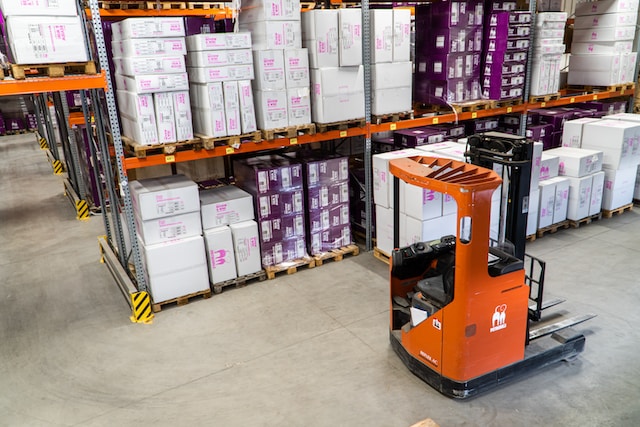In the ever-evolving landscape of supply chain management, technological advancements continue to shape the way businesses operate. One such innovation making waves is Augmented Reality (AR) procurement solutions. This article explores the game-changing impact of AR on supply chain management, from its definition and benefits to real-world applications and future trends.
Understanding AR Procurement Solutions
AR procurement involves the integration of augmented reality technology into traditional procurement processes. It encompasses a range of solutions, including AR-guided picking, inventory management, and order fulfillment. By overlaying digital information onto the physical world, AR enhances the efficiency and accuracy of procurement tasks.
Benefits of AR in Supply Chain Management
Improved Accuracy in Inventory Management
AR-enabled systems provide real-time insights into inventory levels, minimizing errors associated with manual tracking. This leads to more accurate demand forecasting and inventory optimization, reducing the risk of stockouts or overstock situations.

Enhanced Order Fulfillment through AR-Guided Picking
AR-guided picking revolutionizes the fulfillment process by providing visual cues to warehouse staff. This not only speeds up order processing but also reduces errors in picking and packing, resulting in improved customer satisfaction.
Cost Reduction and Efficiency Gains
The implementation of AR in procurement leads to cost savings through streamlined processes and reduced errors. Improved efficiency in tasks such as order picking and inventory counting contributes to overall operational excellence.
Real-world Applications
Case Studies of Successful AR Procurement Implementations
Several companies across industries have successfully integrated AR into their procurement processes. For instance, a major e-commerce giant saw a 30% reduction in order processing time after implementing AR-guided picking in its warehouses.
Industries Benefiting from AR in Supply Chain Management
AR is proving particularly beneficial in industries with complex supply chains, such as pharmaceuticals, automotive, and electronics. The ability to visualize and interact with data in real-time enhances decision-making and reduces bottlenecks.

Future Trends in AR Procurement
As technology continues to advance, so do the possibilities for AR in procurement. Innovations such as AR wearables, advanced data analytics, and integration with Internet of Things (IoT) devices are poised to shape the future of AR in supply chain management.
Considerations for Implementing AR Procurement Solutions
Before adopting AR in procurement, businesses should carefully evaluate factors such as the complexity of their supply chain, the readiness of their workforce, and the potential return on investment. Conducting thorough assessments and pilot programs can help ensure a smooth integration process.
Security and Privacy Concerns
The adoption of AR in procurement introduces new challenges related to data security and privacy. Companies must implement robust security measures to protect sensitive information and ensure compliance with regulations. This includes encryption protocols, secure authentication methods, and regular audits of AR systems.
Training and Skill Development
The successful implementation of AR in procurement requires a skilled workforce. Training programs should focus on familiarizing employees with AR technology, developing problem-solving skills, and fostering adaptability in the face of technological change.
Challenges Faced by Companies Without AR Procurement Solutions
Companies that hesitate to embrace AR in procurement risk falling behind their competitors. The lack of efficiency gains, increased error rates, and slower response times can put non-adopters at a competitive disadvantage in the dynamic landscape of supply chain management.
The Role of AR in Supplier Relationships
AR not only benefits buyers but also strengthens relationships with suppliers. Collaborative AR platforms facilitate real-time communication, reducing lead times and improving overall efficiency in the supply chain. This collaborative approach benefits both buyers and suppliers.
Industry Adoption Rates
The adoption of AR in procurement varies across industries. Early adopters are reaping the rewards of increased efficiency and improved decision-making. Industries slow to embrace AR may face challenges in keeping up with the evolving demands of modern supply chain management.
Success Metrics and Key Performance Indicators (KPIs)
Measuring the success of AR procurement implementations requires the identification of key performance indicators (KPIs). Metrics such as order processing time, error rates, and cost savings provide valuable insights into the impact of AR on procurement performance.
AR Procurement and Sustainability
Beyond efficiency gains, AR in procurement contributes to sustainability efforts. By optimizing inventory levels, reducing waste, and improving overall supply chain transparency, AR aligns with the growing emphasis on environmentally and socially responsible business practices.
Conclusion
In conclusion, AR procurement solutions are reshaping the landscape of supply chain management. From improving accuracy in inventory management to fostering collaborative relationships with suppliers, the benefits of AR are undeniable. Businesses that embrace this technology position themselves for increased efficiency, cost savings, and a competitive edge in the market.
Real-world Applications
Is AR procurement only suitable for large enterprises?
No, AR procurement solutions can be tailored to fit the needs of businesses of all sizes. Many small and medium-sized enterprises (SMEs) have successfully implemented AR to enhance their procurement processes.
How long does it take to see tangible benefits after adopting AR in procurement?
The timeline for realizing benefits depends on various factors, including the complexity of the supply chain and the level of employee training. However, many companies report significant improvements within the first few months of implementation.
What security measures are in place to protect sensitive information in AR procurement systems?
AR procurement systems implement robust security measures, including encryption, secure authentication, and regular audits. Companies should work with experienced AR solution providers to ensure the highest levels of data protection.
Can AR procurement solutions be integrated with existing ERP systems?
Yes, many AR procurement solutions are designed to seamlessly integrate with existing ERP systems. This ensures a smooth transition and minimizes disruption to ongoing operations.
How can companies stay updated on the latest trends and innovations in AR procurement?
To stay informed, companies can participate in industry conferences, engage with AR solution providers, and regularly assess their technology stack for opportunities to upgrade and integrate the latest advancements.




